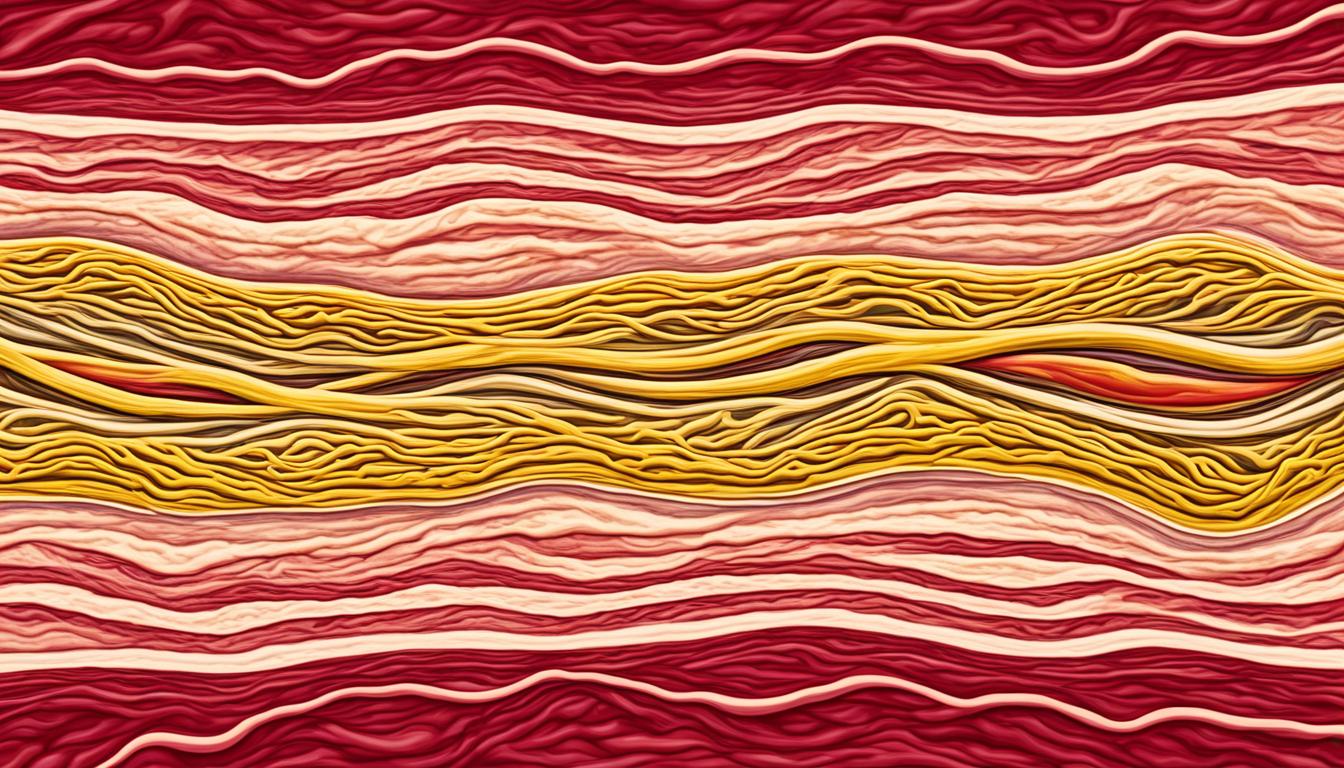Carotid artery stenosis is when the carotid arteries narrow due to plaque build-up. Plaque is made of cholesterol, fat, and other stuff. It can block blood flow to the brain, raising the stroke risk.
The condition shows with mini-strokes, vision issues, and weakness in the face or body. Other signs include slurred speech, coordination loss, and trouble swallowing. These symptoms might come and go suddenly.
Doctors diagnose carotid artery stenosis through exams and tests like ultrasound and angiography. These include carotid duplex ultrasound, carotid angiography, MRA, and CTA.
Lifestyle changes and medications help treat this disease. Yet, there’s also interest in stem cell therapy as a future treatment.
Key Takeaways:
- Carotid artery stenosis is the narrowing of the carotid arteries, usually caused by plaque buildup.
- Symptoms of carotid artery stenosis include TIAs, vision problems, weakness, speech difficulties, and coordination issues.
- Diagnosis involves physical exams and diagnostic tests like ultrasound and angiography.
- Lifestyle changes and medication are common treatments, with emerging research on stem cell therapy.
- Carotid artery stenosis can increase the risk of stroke and requires proper management and care.
Causes, Diagnosis, and Management of Carotid Artery Stenosis
Carotid artery stenosis happens when the carotid arteries narrow. This is often because of atherosclerosis. Atherosclerosis is when plaque builds up in the arteries. It is caused by things like family history of heart disease, being male and under 75, high LDL cholesterol, smoking, high blood pressure, diabetes, obesity, and not being active. All of these can lead to plaque formation. This blocks blood flow to the brain, raising the risk of strokes.
To find carotid artery stenosis, doctors might listen for bruits during an exam. They also do tests like a carotid duplex ultrasound or CT scan. These tests show how much the arteries are blocked. This information helps in planning the best care.
Carotid artery stenosis treatment starts with changing how you live. This includes quitting smoking, and managing blood pressure and cholesterol. It’s also important to stay at a healthy weight. Sometimes, doctors might give medicines to lower the chances of stroke and manage symptoms. In serious cases, surgery might be needed.
Two common surgeries are carotid endarterectomy and carotid stenting. The first method removes the plaque with an operation. The second uses a stent to open up an artery, letting blood flow to the brain again.
Risks Factors for Carotid Artery Stenosis:
- Family history of cardiovascular diseases
- Age (men under 75 have a higher risk)
- High levels of LDL cholesterol and triglycerides
- Smoking
- High blood pressure
- Diabetes
- Obesity
- Sedentary lifestyle
Diagnostic Tests for Carotid Artery Stenosis:
- Carotid duplex ultrasound
- Carotid angiography
- Magnetic resonance angiogram (MRA)
- Computerized tomography angiogram (CTA)
| Treatment Methods | Description |
|---|---|
| Lifestyle Changes | Includes quitting smoking, controlling blood pressure and cholesterol levels, regular check-ups, and maintaining a healthy weight. |
| Medications | Prescribed to reduce the risk of stroke and manage related symptoms. This may include antiplatelet medications and blood thinners. |
| Carotid Endarterectomy | A surgical procedure to remove plaque from the carotid artery. |
| Carotid Stenting | A procedure that involves placing a stent to open up the blocked artery and restore blood flow. |
Stem Cell Therapy for Carotid Artery Stenosis
New studies show that stem cell therapy could be a way to treat carotid artery stenosis. They are using stem cells from bone marrow, called MSCs, in lab tests. These MSCs have helped improve recovery in stroke models. This happened when they were given right into the artery.
MSCs have also made a difference in spinal cord injuries. Their tiny sacs, called extracellular vesicles, helped protect nerves. When it comes to strokes in mice, neural stem cells have shown promise, too.
This research is ongoing, especially for stroke patients. We need more studies to be sure of how well and how safe this therapy is. Right now, it’s not common to use this treatment for carotid artery issues. But, it shows hope for the future.

